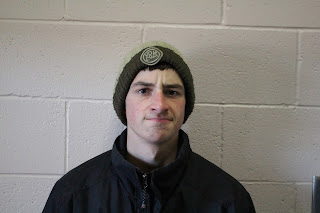
The Paynes blog
Friday, January 20, 2017
Wednesday, December 7, 2016
Tuesday, November 15, 2016
Monday, November 14, 2016
Wednesday, September 21, 2016
biography photo 12
Hi my name is Evan, I am a student taking a photography class in school. My interest in photography began at an early age, as a child I grew up seeing my mom painting and taking photos which always interested me. Although as a kid I never got to participate in the taking of photographs, as my moms camera was to valuable for a kid to hold and my family didn't the money to buy one for me. Around ten I began using my moms camera as well as phone cameras, although not of the best quality I found it quite enjoyable. From age 10-13ish I just used a phone camera to capture the occasional sunsets, animals, moments to remember, etc. Once I got into high school I began taking media arts classes, and began using school resources to take pictures and make videos for the class. After several years of taking media arts I learned my favorite thing to film, skateboarding, combining to passions I have. Now I'm taking a photography class hoping to farther my photography skills, my time in this class will be used to take photos from various points of view and of various things. As well as adding new techniques we will also be learning about our representation, and how to present ourselves as well as our photos.
Friday, September 16, 2016
the brief history of photography
History of photography
Photography originated in ancient times beginning with a
projector like device used in darkened rooms, that places images on walls
called the Camera obscuras. Later into the 16th century the Camera
obscuras began seeing improvements, allowing clearer images by enlarging the
hole and adding a telescope lens 1727: Professor J. Schulze mixes chalk, nitric
acid, and silver in a flask; notices darkening on side of flask exposed to
sunlight. Accidental creation of the first photo-sensitive compound. They began
using paper and this mixture to create photographs with the sunlight, creating
the first pictures to be recorded. Although pictures were not permanent as they
quickly darkened everywhere, Niépce began experimenting with organic
chemicals for a better image to be captured.
The oldest surviving photograph of the image formed in a
camera was created by Niépce in 1826 or 1827. It was made on a
polished sheet of pewter and the light-sensitive substance was a thin coating
of bitumen, a naturally occurring petroleum tar, which was
dissolved in lavender oil, applied to the surface of the pewter and
allowed to dry before use. After a very long exposure in the camera traditionally
said to be eight hours, but now believed to be several days, the bitumen was
sufficiently hardened in proportion to its exposure to light that the
unhardened part could be removed with a solvent, leaving a positive image with
the light areas represented by hardened bitumen and the dark areas by bare
pewter. Whilst with his partners Chalon-sur-Saône and Louis Daguerre in
Paris, they began refining the process for quicker results although still
taking several hours.
Niépce’s student began taking over with
his own ideas, shortly after Niépce passed away in 1883, his research focused
more on using a silver based process using mirrors and iodine the process still
took several hours. Exposure times
were still painfully long, until Daguerre made the discovery that an invisibly
slight or latent image produced on such a plate by a much shorter
exposure could be developed to full visibility by mercury fumes. He
began to bring down the exposure time by using a strong hot solution using salt
to remove the silver iodide under optimum conditions. They then took their
improved method to the French academy of sciences, after the first details were
unveiled the news quickly spread. Although the specimens were withheld from
public at Daguerre's studio, until exchanges were made with the French
government and unveiled on 19 August 1839. After early reports of Daguerre's invention,
a man named henry fox Talbot began perfecting his own method. Using notes from Daguerre’s
process he created a stabilized photographic negatives, he acquired the key to
this process from his friend John Herschel in the form of sodium thiosulfate
that would dissolve silver salts.
Talbot
created silver chloride sensitive paper that brought down exposure time down to
an hour or more, until 1840 where Talbot created the “calotype” process using Daguerre’s method
of the slight latent to decrease exposure to a couple minutes. Paper coated in
silver iodide was placed inside a camera making a translucent negative images,
ultimately the photographic process came about from a series of
refinements and improvements in the first 20 years.
In 1884 George
Eastman developed a “dry gel” on paper instead of the photographic plate, so
that a photographer no longer needed to carry boxes of plates and toxic
chemicals around. In july 1888 Eastman released his first Kodak with the slogan
“you press the button we do the rest”.
Subscribe to:
Comments (Atom)























